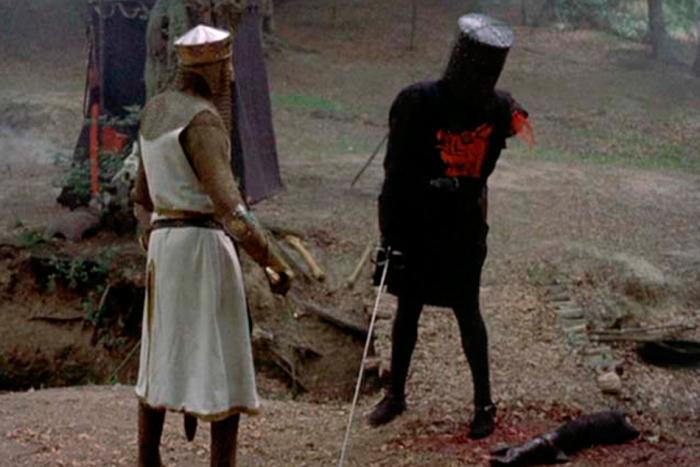An author’s corporeal non-existence has rarely been a major issue in the publishing industry. Probably the most recent example: Ron Burgundy. The San Diego newsman is responsible for this month’s Let Me Off at the Top! My Classy Life & Other Musings, a satisfyingly virile celebration of mustache-wearing, jackalope-hunting, flute-playing and other signifiers of Burgundy’s brand of machismo. The memoir may lose some potency, however, if you dwell on the fact that its author is a fictional character played by Will Ferrell in the 2004 comedy Anchorman: The Legend of Ron Burgundy and the upcoming Anchorman 2: The Legend Continues.
The true matter of its authorship having been carefully concealed, Let Me Off at the Top! could perhaps be uncharitably seen as a calculated effort to bamboozle the reading public. Yet there’s something honorable about the cheerful transparency of Burgundy’s ruse, one that leaves nobody feeling foolish. Beyond simply being a promotional item or a fratboy stocking stuffer, where Let Me Off at the Top! really succeeds is as a gateway to a rich netherworld of cross-platform cash-ins, cheeky parodies, and a more endearing variety of fraud than, say, the complete works of JT LeRoy or the Hitler Diaries. Maybe, then it’s time we gave more serious scrutiny to other real books with phony writers. Here are four for the ages.
*
Pawnee: The Greatest Town in America (2012)
By Leslie Knope
Though this unassuming Indiana city may be notorious for being the fourth most obese municipality in America, Pawnee has nevertheless elicited this lively appreciation by local councilwoman Leslie Knope. The notion that a sitcom character could create such a compelling work of civic boosterism is sadly undermined by the credit on the inside cover page that indicates the co-authorship of “Nate DiMeo and the Creative Team of Parks and Recreation.” Worse yet, Knope’s voice on the page has elements of the more intentionally abrasive version of the character that prevailed before the series found its stride. Still, Pawnee deserves a space next to other TV tie-ins such as I Am America (And So Can You!) by the nominally non-fictional Stephen Colbert. Plus, it’s free of the cognitive dissonance some may find in the most recent example of P&R-related lit: Nick Offerman’s Paddle Your Own Canoe, a free-flowing expression of Burgundy-calibre machismo in which any line between actor Offerman and his character Ron Swanson gets muddier than the Mississippi. (Readers who demand more TV than TV can supply may also find refuge in the mystery novels of Richard Castle.)
*
The Secret Diary of Laura Palmer (1990)
Thanks to the proliferation of online fan fiction, we are now privy to a vast overabundance of samizdat sexploitation fantasies involving TV characters. A pioneer in so many regards, Twin Peaks beat the rush with an early literary manifestation of the trend; the series’ dreamy malevolence suffuses every page of this imagined journal by the murdered high schooler at the centre of the mystery. Released at the time of the show’s high-water mark in mid-1990, the book was a media sensation in its own right and the “as seen by” credit on the title page is a not so subtle acknowledgment of its actual author, David Lynch’s daughter Jennifer. What’s more startling is the ferocity that the diary retains in its plainspoken depiction of the doomed teen dream’s descent from a gilded state of girlish innocence (Daddy buys her a pony in the second entry!) into ugly dramas of degradation and death. And, whereas the show invited viewers to conjure up all manner of seamy imaginings based on its fragmentary revelations about Palmer’s divided existence—what exactly went on at One-Eyed Jack’s?—the events as they’re related here possess a stark brutality. It’s less a fake diary than one long howl of pain, much like Daddy Lynch’s almost unwatchable big-screen coda for the series, Twin Peaks: Fire Walk With Me.
*
Venus on the Half-Shell (1975)
By Kilgore Trout
Science-fiction writers tend to be a playful lot. Stanislaw Lem delighted in outdoing the meta-fictional gymnastics of Jorge Luis Borges’ Ficciones with books such as Imaginary Multitude (1973), a compendium of introductions for science texts that have yet to be written. Though a genre giant in his own right, sci-fi and fantasy writer Philip José Farmer had a sideline career as a literary impressionist and piss-take artist. Along with writing fictional biographies of Lord Greystoke and Doc Savage, Farmer spun out a whole version of the phony pulp sci-fi novel excerpted in Kurt Vonnegut’s God Bless You, Mr. Rosewater (1965). Credit originally went to Vonnegut’s sometime alter ego Kilgore Trout, so many readers figured Kurt was responsible for it, too. Reprints, though, including a brand-new one by Titan Books, restore Farmer’s name to this primo silliness, which now starts with the Earth’s destruction and proceeds through a series of goofy interplanetary set pieces—from a love-making session on the head of the Sphinx of Giza to a saucy encounter with a robot who’s a dead ringer for Botticelli’s Venus—that might’ve tickled Douglas Adams.
*
Naked Came the Stranger (1969)
By Penelope Ashe
The public floggings prompted by James Frey’s A Million Little Pieces and Jonah Lehrer’s fanciful Bob Dylan quotessuggest we live in a particularly intolerant age when it comes to literary fakery. Not so in the late 1960s and early 1970s, an era distinguished by the colorful endeavours of hoaxers such as Howard Hughes “autobiographer” Clifford Irving and such bestsellers as 1971’s Go Ask Alice, a seemingly first-person account of a teen’s downward spiral into drug addiction, prostitution, and psychosis. (Comedian Paul F. Tompkins memorably lampooned the anonymous author’s attempts at teen-speak, especially when she refers to a mental asylum as a “freak wharf.”)
Such was the readership’s willingness to submit to this dubious hokum that sales for Naked Came the Stranger actually spiked after it was revealed that author Penelope Ashe—a purveyor of salaciousness in the mold of Jacqueline Susann and Harold Robbins—was really a group of 25 journalists at Newsday. Their mission was to ridicule the American public by giving them exactly the kind of gutter smut they so clearly craved; it hardly mattered that the results were ridiculously incoherent. That said, the book is marginally better than the hoax demanded, especially the hilariously overheated scene in which our heroine—a Long Island housewife just like “Ashe” was purported to be—gets it on with a rabbi. This and other scenes boast a surprisingly sprightly take on the games of dominance and submission that merit rather more sombre treatment in other recent examples of the genre. Indeed, teams of disgruntled newspaper hacks may very well have a talent for dirty books—perhaps the legions currently being cut from all the once-mighty dailies may be inspired to pool their resources and create Penelope Ashes of their own.





